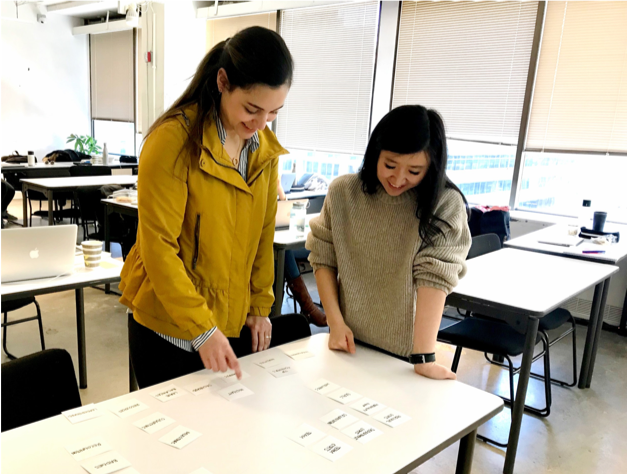Background
Our client was the Washington DC government, who was looking to create a perks program that would enable managers to share appreciation for their teams.
Task
My group was tasked with building a working prototype for a government employee perks program, Pick Your Perk, that boosts employee engagement and morale.
Role & Scope
My role on a 3 person team was as lead of user research and research synthesis.
This project was a 3 week sprint.
Deliverables
Survey with 129 responses
20 User Interviews
Clickable prototype using Axure RP
Methods
Screener Survey
User Interviews
Affinity Mapping
Competitive Analysis
Card Sorting
Sketching
Wireframing
Paper prototypes
User Testing
Problem
Washington DC government employees need a way to earn valuable and meaningful rewards because they often feel undervalued and unmotivated at work.
Solution
“Pick Your Perk,” a benefit portal website for DC government employees that promotes employee engagement, provides customized, meaningful rewards and facilitates feedback and communication.
The Process
Survey & User Interviews
My team initiated the research process with a combined screener and survey. From those results, we were able to identify the respondents who most closely resembled our target user — DMV professionals (government or non-government).
Survey Responses: 129 people
One-on-One Interviews: 20 people
Affinity Mapping
Our first step in synthesizing the interview findings was affinity mapping.
Insights Gained
The most prominent insights were associated with the following 4 themes:
Peer Recognition - not just top down, this improves company culture and boosts collaboration and confidence
Timely & Ongoing - consistency is important. It can’t just be a one-time thing
Specific & Direct - people value shout outs for specific instances
Documented Appreciation & Rewards - concrete appreciation that is displayed publicly
Competitive Analysis
Next, we decided to evaluate existing popular employee engagement platforms as well as some relevant research studies. For our competitive analysis, we focused on feature comparison (for various competitors) for 4 features: social recognition, gamification, employee rewards, and engagement insights.
Insights Gained
We were able to recognize industry conventions (things our users would expect), things that were done well, and things that needed improvement. All of our research was useful in informing our design process moving forward.
The Features
Moving forward, we made sure to align the website features with our proposed solution:
· Promote employee engagement: Point system, social recognition feed, leaderboards
· Provide customized rewards: Regularly updated reward catalog that reflects employee preferences
· Facilitates feedback: Monthly pulse surveys, open suggestion box
Insights Gained
These card sorts helped guide the information architecture for our site. We identified 3 major categories to be featured on the navigation bar:
Award
Rewards
Feedback
Card Sorting
After completing our primary and secondary research, and crafting problem and solution statements, we had a pretty solid grasp on what content we would include on the website. Based on this information, we conducted 4 rounds of card sorting (2 closed, 2 open).
Sketching & Paper Prototypes
We went through several rounds of sketching to explore different concepts and test their usability. We were able to use feedback to design our paper prototypes, which were tested to evaluate the flow and intuitiveness.
User Feedback
Users provided feedback that: navigation bar should be simplified and have an obvious “home” button, we needed to work on information hierarchy and prioritization, and we needed to visually break up content to make it clearer. We used this feedback to iterate on our designs.











